Acespec Polyamory & Autism
I’ve been working on a multi-chapter essay on polyamory through an asexual lens for over a year. There’s so much I want to include in it but the reality is: not all of it will fit. Some of it’s too personal for an academic essay. Some of it is tangential. Some of it’s straight up the result of delving into autistic hyperfocus down a rabbit hole that’s too far gone to be deemed anywhere near relevant.
But all these ideas still take up space in my mind, wanting to be shared. I want to share them. And I wonder if making a series detailing the thoughts behind the work of this essay on polyamory stories – giving space for those thoughts and inevitable rabbit holes (let’s face it, they’re a feature of the autistic experience, not a bug) – will be of interest to anyone else.
And whether its absence will make the academic writing more clear.
So I bring to you this upcoming blog series called Acespec Polyamory & Autism (APaA), to keep always front and centre the focus I have on de-centring sex from my discussions on polyamory, alongside the other significant lens through which I view this work.
Let’s begin!
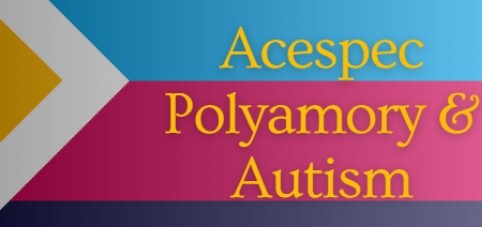
In which we cover AIDS, Rabbit Holes, 90s Queer Theory (at a glance) and the Pros and Cons of Representation.
In 1983, AIDS is in full swing (I promised rabbit holes and here I am delivering with spectacular success right out of the gate!) The CDC is attempting to protect the nation’s blood supply. They still don’t know how it’s being transmitted despite the fact that it’s been being blamed on the gay community for years.
This moment in time/queer history is tangentially relevant to not one but two of my writing projects, actually, the second one being my vampire story that crosses creature horror with the real life horror of this blood-born virus.
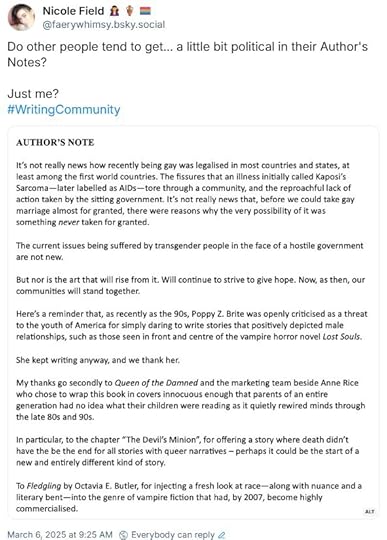
By 1987, my ABC cartoons were interrupted by what’s still viewed today as one of the grimmest advertisements filmed during the AIDS crisis. Naturally, I had questions, even if I can’t remember the answers so vividly as I can remember the impact of this ad campaign (Ed: The style of this campaign was apparently suggested to be revisited during the Covid-19 pandemic, but more on the connection between these two outbreaks shortly).
Out of 1992-3 would emerge the Lesbian Avengers, which Abigail Thorn details well in this episode of Philosophy Tube. Around this sprung a great deal of the Queer Theory canon. (Ed: Shortly is now. In something not remotely ironic, the video to automatically play after this one was this exclusive from six months ago that opens with the line, “Trump’s America has started to challenge and redefine academic freedom”, thus closing the loop of hostile government [Trump/Reagan] + global health crisis [Covid-19/AIDS] that links the past half a decade to most of the 80s for me.)
In 1997, being gay was finally de-criminalised in Tasmania, a state that before this point, as Hannah Gatsby put it, had been of the opinion that queer people should “pack up your AIDS in a suitcase and fuck off to Mardi Gras.” Funnily enough, this is also the year that the first edition of what would go on to be the so-called “poly bible”, The Ethical Slut, was released in first edition by Greenery Press.
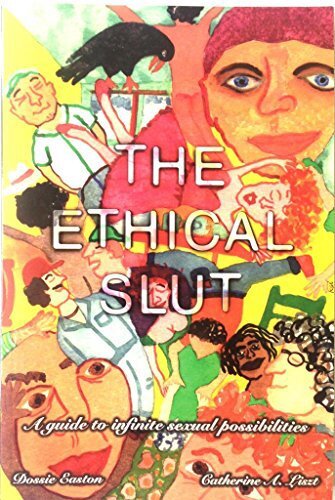
(1997 cover of the first edition of The Ethical Slut.)
Meanwhile, this was the year I turned 15.
2 years later, a friend would tell me she was a lesbian after a particularly hurtful experience with her first boyfriend. A year after that, a friend would ask me, “But are you gay or straight?” and I would reply, “I don’t know.”
I don’t know.
I did know. I knew I had two cousins who were queer. I knew from my grandmother that it was all right for me to bring a girl home if that was the reason I’d never brought home a boyfriend. This was followed with a statement I’ve never forgotten and echoed mockingly in story many times, “Just so long as you’re not one of those bi people.“
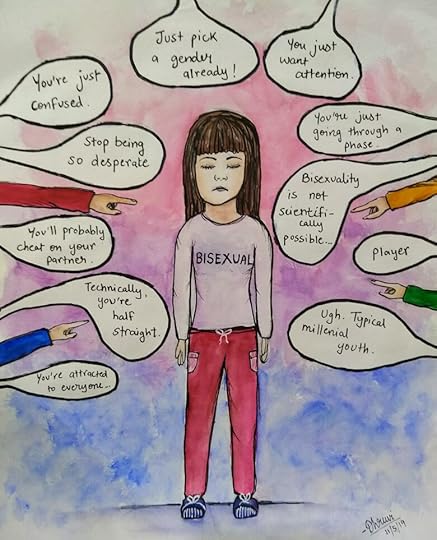
(Image on biphobia taken from Wiki.)
All I knew of “bi people” was early internalised biphobia. They were supposed to be greedy, right? Greedy about what? Well, about sex, I guess. So, that was no problem to me since I’d never experienced any sexual attraction to anyone.
Only problem was… I already knew I couldn’t say the same of romantic attraction.
In 2002, I proudly proclaimed that it didn’t make sense to me to be interested in people of multiple genders and not date representatives of each of these genders at the same time, should the opportunity arise. In so proclaiming, I managed to put myself inescapably into a very sex oriented spere despite myself.
Except, in 2002, there wasn’t a whole lot of sex explicitly connected to either my idea of what I was going to do, or the feedback I had from friends. Hell, in 2002, I vividly remember the term I used for the relationship style I was most drawn to was “open” (as opposed, of course, to “closed”) because I hadn’t come across the term “polyamory” yet.
Ahhh yes, we’re finally here. To the polyamory. Thank you for sticking around.
In the video above, Abigail talks about the conversations being had in the 90s over the pros and cons of lesbian activists getting a lot more representation. It was then linked to the same conversations being had in 2019 by trans and non-binary people when this episode originally aired.
When I first heard that, I thought… “When are we going to see that same thing for polyamory, and be able to ask those questions too?”
But the more I thought about it, the more I realise… we have. And we are. And, just like those 90s lesbian activists, and our trans and non-binary siblings before us, I find myself wondering over the pros and cons of having a lot more representation.
In 2002, I hadn’t yet heard the word polyamory. That would change by 2004, yet would still be rather sexless because there wasn’t exactly a widespread consensus of what exactly polyamory was as a movement beyond some kind of consensual non-monogamy. If one looked a little further, they might be able to find that, just like the pronoun “they”, there is a long historical precedent for non-monogamy.
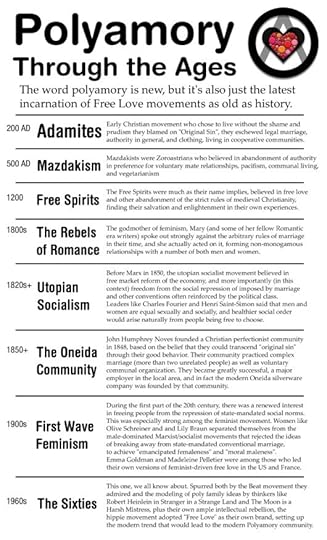
(Infographic on polyamory through the ages.)
These days, if you ask five polyamorous people what polyamory is, you’ll get five different answers (honestly, this isn’t so similar to both autism and asexuality, it’s got me thinking on the possibility of a polyamorous… spectrum.)
But if you ask anyone else, the answer will almost always include sex.



